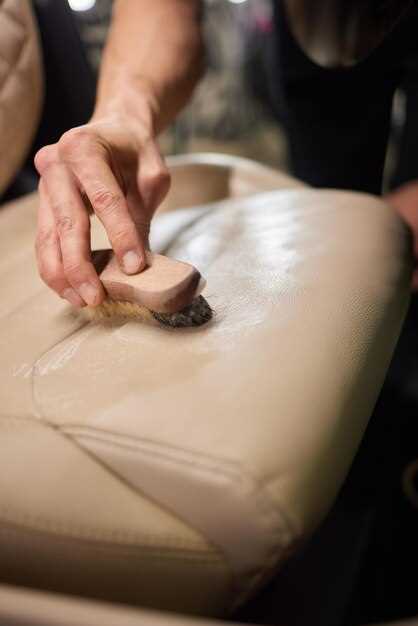
Classic cars are not just vehicles; they are a testament to automotive history and craftsmanship. Proper care of your classic car’s upholstery is essential in preserving its beauty and value. The materials used in classic car interiors can vary significantly, ranging from rich leather to unique fabrics, each requiring specific maintenance routines to ensure longevity.
Regular cleaning and conditioning are crucial for the upkeep of your classic car’s upholstery. Dust and dirt can accumulate over time, leading to deterioration of the materials. Utilizing gentle cleaning solutions designed for automotive interiors can help maintain the integrity of the upholstery without causing damage. Additionally, protecting these surfaces from harmful UV rays with appropriate protectants will prevent fading and cracking, ensuring your classic car looks stunning for years to come.
Another important aspect of care involves addressing any wear or damage as soon as it is detected. Stitching and seams on classic upholstery can become frail with age, and small repairs can prevent more significant issues down the line. By recognizing the signs of wear and taking proactive steps, you can maintain the distinctive character and comfort of your classic car’s interior, enhancing both its aesthetic appeal and resale value.
Choosing the Right Cleaning Products for Vintage Fabrics

Maintaining the upholstery of a classic car requires careful attention to the choice of cleaning products, especially when dealing with vintage fabrics. These materials often have unique properties and textures that standard cleaners can damage.
First and foremost, it’s crucial to select products that are specifically formulated for vintage upholstery. Look for cleaners that are gentle yet effective, ideally those designed for delicate fabrics. Avoid harsh chemicals and strong solvents, as they can lead to discoloration and deterioration of the material.
Consider using a pH-neutral cleaner. This type of cleaner helps preserve the integrity of the fabric while effectively removing dirt and stains. Always test the cleaner on a small, inconspicuous area before applying it more broadly, to ensure that it does not adversely affect the upholstery.
For stubborn stains, opt for cleaners that contain safe, non-abrasive ingredients. Enzyme-based cleaners can be particularly effective without compromising the fabric quality. Additionally, using a soft brush or cloth during the cleaning process minimizes the risk of damage to the vintage upholstery.
Lastly, always consult the car’s manual or a professional to find recommendations specific to the type of fabric used in your classic car. Taking time to research and choose the right cleaning products will ensure your vintage upholstery remains in excellent condition for years to come.
Routine Inspection and Repair Techniques for Upholstery
Regular inspection of your car’s upholstery is essential for maintaining its appearance and durability. Begin by checking for signs of wear and tear, such as fraying seams, faded colors, or stains. Pay close attention to high-traffic areas, including the driver’s seat and armrests, where damage is more likely to occur.
To perform routine inspections effectively, set a schedule–preferably monthly or quarterly–depending on usage. During each inspection, gently run your hands over the upholstery to feel for any rough patches or weakened areas. This tactile assessment can help identify issues before they escalate into more significant problems.
When you discover minor damages, such as small tears or stains, prompt repair can prevent further deterioration. Use upholstery adhesive for small tears; apply it carefully, ensuring the edges stick together firmly. For stains, specific cleaners designed for auto upholstery will usually yield the best results. Test any cleaning solution on a small, inconspicuous area first to avoid discoloration.
If you’re dealing with more extensive damage, such as large rips or significant fading, consider consulting a professional. Upholstery specialists can provide expert advice, potentially offering restorative services such as re-dyeing or replacing affected sections. Investing in such repairs can prolong the life of your classic car’s interior and maintain its value.
Remember, consistent care and proactive repairs not only enhance the aesthetic of your vehicle but also contribute to a comfortable driving experience. Regular maintenance of your upholstery will ensure that your classic car remains a source of pride for years to come.
Climate Considerations for Preserving Upholstery Integrity

Maintaining the integrity of classic car upholstery requires careful attention to climate factors that can significantly affect its condition. UV radiation from sunlight can cause fading and deterioration of fabrics and leather. To mitigate this, it is essential to park classic cars in shaded areas or use protective covers when parked outdoors for extended periods. Investing in window tinting or UV-blocking films can also be beneficial in preserving the color and quality of upholstery.
Humidity is another critical factor. Excessive moisture can lead to mold and mildew growth, particularly in leather interiors. To combat high humidity, consider using silica gel packs or dehumidifiers within the vehicle, especially in climates prone to excessive moisture. Conversely, extremely dry environments can cause upholstery materials to crack and lose their suppleness. Regular conditioning of leather and fabric upholstery can help combat dryness, ensuring that it remains pliable and resilient.
Temperature fluctuations also pose a risk. Extreme heat can warp or damage components, while freezing temperatures may cause materials to become brittle. It is advisable to store classic cars in climate-controlled garages to shield them from these extremes. Additionally, maintaining the interior temperature during hot summer days by using reflective sun shades can further protect upholstery from harmful heat exposure.
Regular care and maintenance tailored to these climate considerations can significantly enhance the longevity and appearance of classic car upholstery. By staying vigilant about environmental factors and taking proactive measures, owners can ensure that their classic cars remain in pristine condition for years to come.



